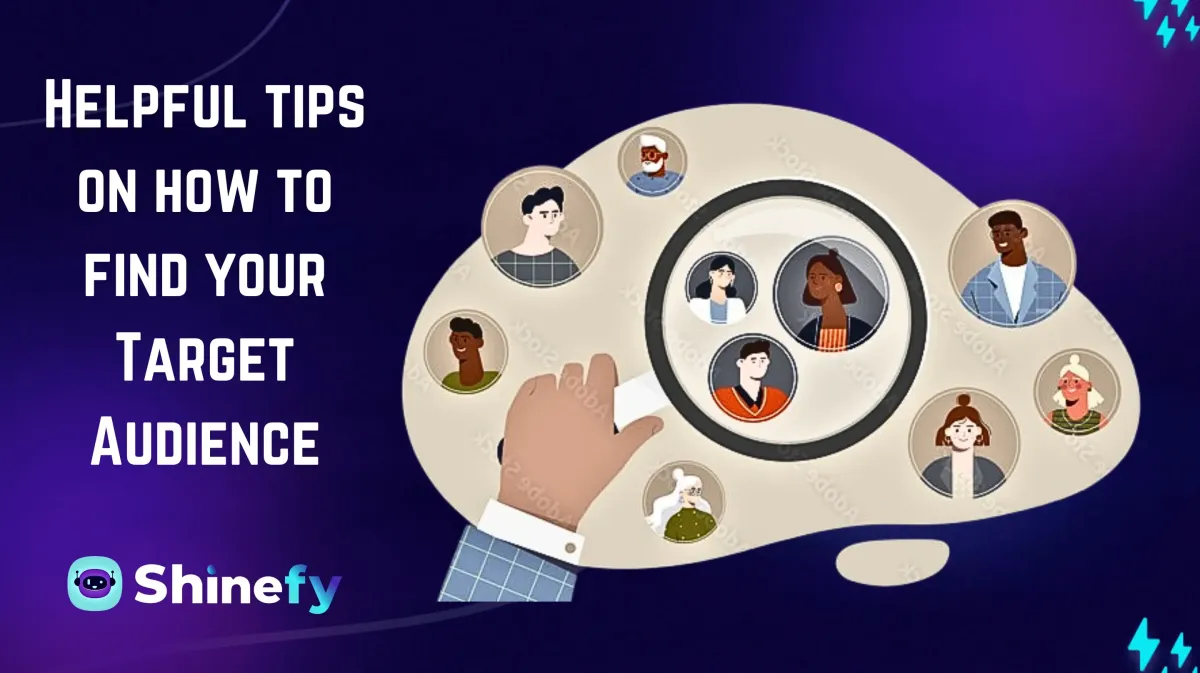
October 9, 2024 by Shinefy

Helpful tips on how to find your Target Audience
What is a target Audience
A target audience is a specific group of consumers who are most likely to be interested in your product or service. This group can be defined by various factors such as age, gender, income level, geographic location, interests, and more.
The nature of your product or service will determine whether your target audience is broad or niche. For instance, if you sell shoes, your potential market is quite large since people of all ages and genders wear shoes. However, if you specialize in high-performance running shoes, your focus would be narrower, targeting individuals who are passionate about running or participate in marathons. Clearly defining and segmenting your target audience is crucial for crafting effective messaging and selecting the right communication channels.
Target Audience VS Target Market
Both target audience and target markets are centered around segmenting customers into groups to make informed business decisions;
A target market is the set of consumers that a company plans to sell to or reach with marketing activities.
A target audience is the group or segment within that target market that is being served advertisements. This makes the target audience a more specific subset of a target market.
Types of Target Audience
Demographics: Demographic segmentation is a common method for identifying a target audience because demographic data is readily available through sources like censuses and market research tools. Factors such as age, gender, and income can significantly influence consumer preferences and behaviors.
Purchase Intentions: This involves identifying groups of consumers who are actively seeking specific products or services. Understanding their intent helps tailor your messaging effectively.
Lifestyle: Categorizing consumers based on their lifestyles, including their interests, activities, values, and opinions, offers deeper insights into their preferences.
Interests: Knowing what hobbies or activities interest your audience helps you connect with them on a personal level and understand their motivations better.
Subculture: These are groups that share unique experiences or interests. By understanding subcultures relevant to your brand, you can tailor your approach to engage these communities effectively.
Strategies to identify your Target Audience
1. Social Media Analytics
If you have an existing presence on social media platforms like Facebook or Instagram, tools like Meta’s Business Manager offer insights into your audience demographics. This information can help adjust your marketing strategies to better align with the actual followers you attract.
2. Website Analytics
Analyzing data from tools like Google Analytics provides valuable insights into the demographics and interests of your website visitors. This information helps refine marketing strategies by understanding visitor behavior and preferences.
3. Customer Relationship Management (CRM) Data
Using customer relationship management (CRM) systems allows you to analyze customer data directly. Insights from CRM data can inform targeted marketing campaigns by revealing customer behaviors and preferences.
4. Surveys
Conducting surveys among your most valuable customers can provide direct feedback about their preferences and needs. This approach helps anticipate market trends.
5. Look-Alike Tools in Advertising
Advertising platforms often offer tools that help identify potential customers similar to your existing ones through look-alike targeting features. This approach uses existing customer data to find new audiences likely to be interested in your offerings.
6. Social Listening
Social listening goes beyond tracking social media mentions by analyzing why audiences discuss certain topics related to your brand or industry online. This insight aids in crafting messages that resonate with them.
7. Competitive Analysis
Studying competitors who share the same target audience provides insights into successful strategies they employ. Analyzing their methods can help refine your own marketing tactics to better reach potential customers.
By utilizing these strategies, businesses can gain a deeper understanding of their target audience's demographics, interests, and behaviors, ultimately enhancing marketing effectiveness and customer engagement.
